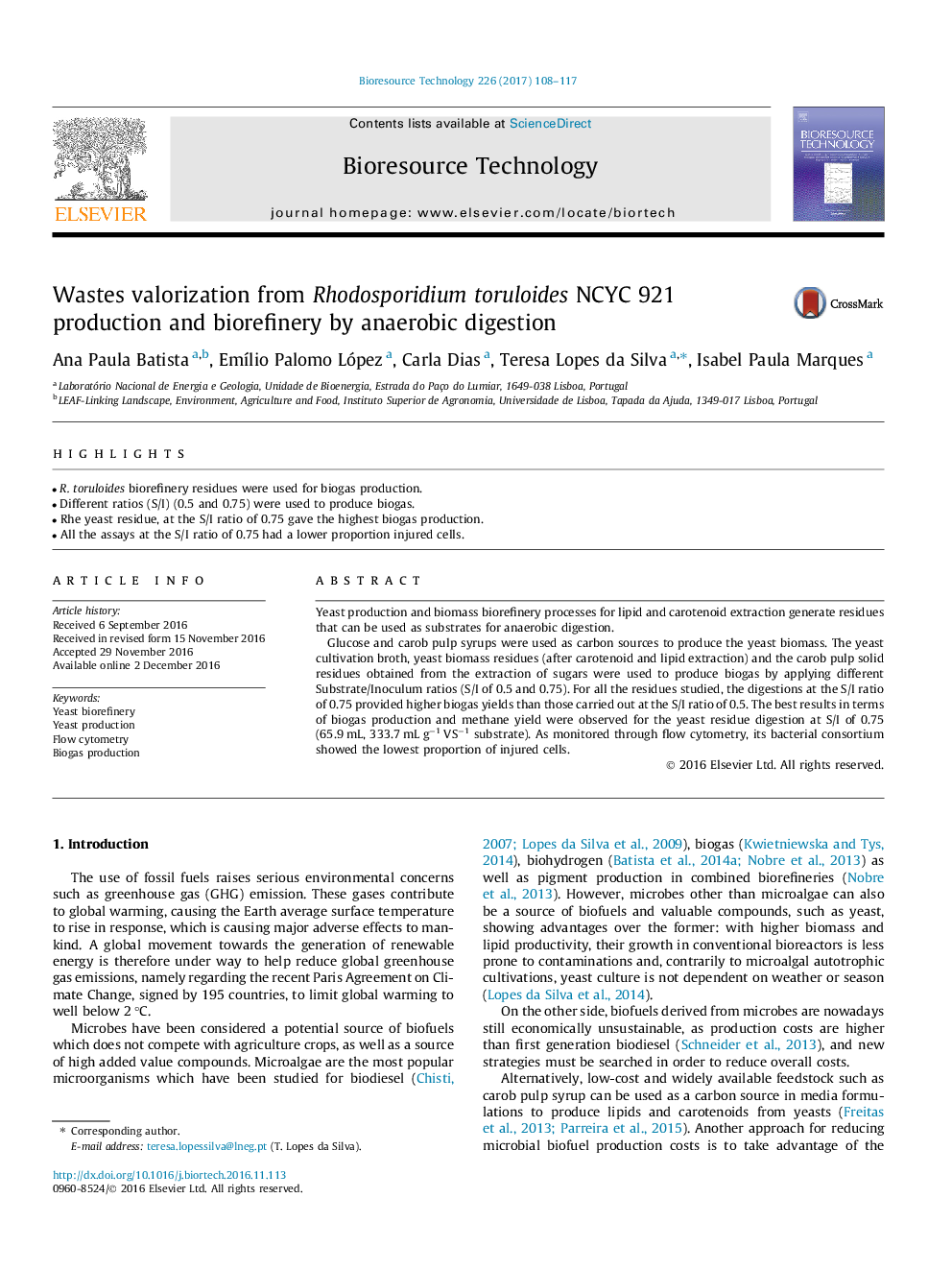| Article ID | Journal | Published Year | Pages | File Type |
|---|---|---|---|---|
| 4997635 | Bioresource Technology | 2017 | 10 Pages |
â¢R. toruloides biorefinery residues were used for biogas production.â¢Different ratios (S/I) (0.5 and 0.75) were used to produce biogas.â¢Rhe yeast residue, at the S/I ratio of 0.75 gave the highest biogas production.â¢All the assays at the S/I ratio of 0.75 had a lower proportion injured cells.
Yeast production and biomass biorefinery processes for lipid and carotenoid extraction generate residues that can be used as substrates for anaerobic digestion.Glucose and carob pulp syrups were used as carbon sources to produce the yeast biomass. The yeast cultivation broth, yeast biomass residues (after carotenoid and lipid extraction) and the carob pulp solid residues obtained from the extraction of sugars were used to produce biogas by applying different Substrate/Inoculum ratios (S/I of 0.5 and 0.75). For all the residues studied, the digestions at the S/I ratio of 0.75 provided higher biogas yields than those carried out at the S/I ratio of 0.5. The best results in terms of biogas production and methane yield were observed for the yeast residue digestion at S/I of 0.75 (65.9Â mL, 333.7Â mLÂ gâ1Â VSâ1 substrate). As monitored through flow cytometry, its bacterial consortium showed the lowest proportion of injured cells.
